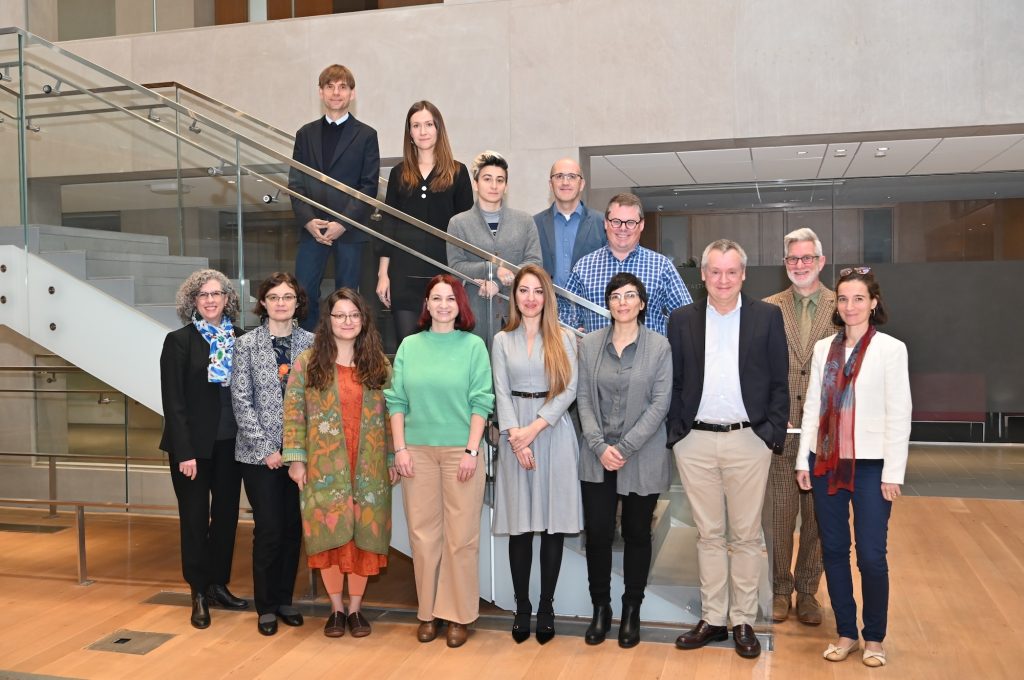


For the second year, the Index of Medieval Art was pleased to offer the Graduate Student Travel Grant in an effort to support a non-Princeton student who wishes to attend the Index conference in person. The recipient this year was Anahit Galstyan, a PhD student in the Department of History of Art and Architecture at the University of California, Santa Barbara, who joined us in Princeton on November 11 and attended the “Whose East?” conference. We are glad to share her thoughts.
“It was an immensely enriching experience, and I found great enjoyment in the proceedings. The presentations were not only intellectually stimulating but also delivered with an engaging flair that made the entire event thoroughly enjoyable. I would like to extend my heartfelt thanks for the generous grant that made my participation in this conference possible. Without such support, this experience would have remained beyond my reach. I think that by facilitating students’ attendance through the Graduate Student Travel Grant, the Index of Medieval Art contributes to the broader dissemination of knowledge and the fostering of academic dialogue.
“I found great merit in the engagement of the meticulously curated selection of participants in exploration and reevaluation of the entrenched dichotomies between East and West, Islam and Christianity. The discussions surrounding cultural interactions within the expansive region of the Eastern Mediterranean and beyond also further contributed to the recent scholarly discourse on questioning the traditional disciplinary predisposition of Byzantine studies to prioritize its metropolitan center, this way contributing to the reshaping of the dominant narratives in our field.
“Given my focus on the culturally and socially diverse medieval city of Ahlat and its funerary architecture, the exploration of intercultural exchanges at the event deeply resonated with my own work, making it not just intellectually engaging but also personally significant. I enjoyed all the presentations, with one of the standouts being Christian Raffensperger’s talk on the classification and categorization of Rus in medieval times. His insights provided a refreshing perspective that challenges established norms in the field. Anthi Andronikou’s presentation on interfaith dynamics between Eastern Christian and Islamicate art was also especially captivating among the various talks.
“I want to particularly highlight Gohar Grigoryan’s presentation, which provided a fascinating glimpse into first-hand accounts, shedding light on the intricate dynamics of Armenian elite self-fashioning in the thirteenth-century geopolitical context. It was particularly noteworthy in challenging the traditional view of a relatively uniform Armenian society during that era. Her paper was not just intellectually engaging but also skillfully presented, prompting me to reflect on my own research on identity creation. Grigoryan’s work emphasized the importance of examining the individuals I study not only in relation to external political dynamics but also in relation to each other, encouraging a more nuanced exploration of subtle expressions of personal identity. Additionally, Erik Thunø’s exploration of South Caucasian cross steles added another dimension to my understanding, urging me to consider similar cultural expressions beyond simple transmission.
“While attending the conference was truly delightful, I was also thrilled to have the opportunity to visit the numismatics collection. Handling and closely examining Byzantine, Cilician Armenian, and Seljuk coins was a highlight for me – an opportunity that I doubt I would have had as a grad student otherwise. Additionally, spending time in the Index was a wonderful experience. Dr. Maria Alessia Rossi and Dr. Henry D. Schilb provided invaluable assistance in navigating both physical and online catalogs to trace some types of funerary objects I study, such as censers and lamps, that are scattered across different collections worldwide. Finally, I am immensely grateful to Professor Pamela Patton for her generous hospitality and to Fiona Barrett for ensuring that I was well-fed throughout my stay.”
And we thank YOU, Anahit, for your thoughtful comments and for sharing your experience with the Index readers!
Anahit Galstyan is a PhD student in the Department of History of Art and Architecture at the University of California, Santa Barbara. Her research focuses on Christian-Islamic interactions in medieval Anatolia as manifested in the transculturation and the transmission of architectural knowledge.